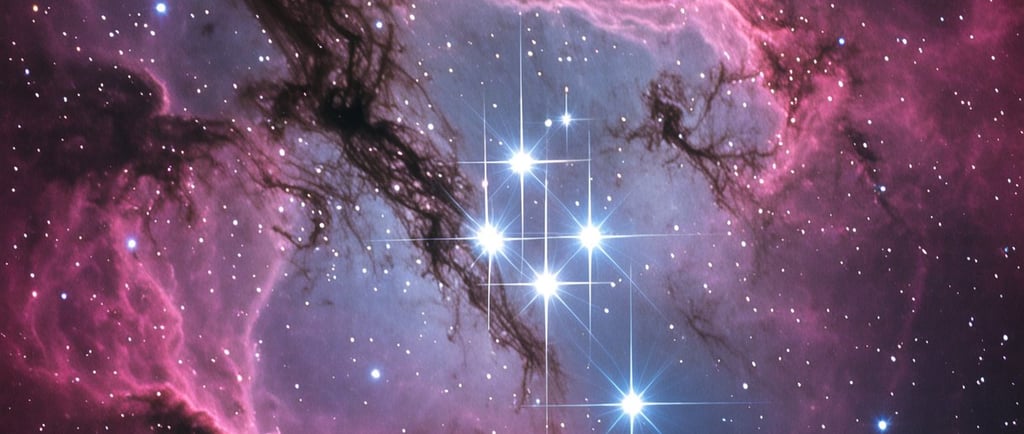The Trapezium Cluster Amidst the Orion Nebula


Introduction to the Orion Nebula
The Orion Nebula, located approximately 1,344 light-years from Earth, is one of the most studied and celebrated regions in the night sky. Known for its vibrant colors and intricate structures, this stellar nursery is a site of ongoing star formation. At its heart lies the Trapezium cluster, a group of young, hot stars that plays a significant role in the dynamics of the nebula.
The Trapezium Cluster: An Overview
The Trapezium cluster is composed of several bright stars that are predominantly of spectral type O and B, among the hottest and most massive stars known. These stars are powerful emitters of ultraviolet light, which contributes to the illumination of the surrounding gas and dust within the nebula. Their intense radiation not only creates a beautiful cosmic display but also affects the surrounding environment, promoting further star formation.
Importance of the Trapezium Cluster in Astrophysics
The significance of the Trapezium cluster transcends its aesthetic appeal. Its study offers critical insights into stellar evolution and the lifecycle of stars. The cluster serves as a prime example of how massive stars influence their surroundings. As the stars in the Trapezium reach the end of their lifecycle, they will explode as supernovae, enriching the interstellar medium and contributing to the formation of future stars.
Furthermore, researchers track the dynamics of the Trapezium cluster to understand the interaction of high-energy processes among young stellar clusters. By observing this region, scientists can deduce information regarding mass distribution and gravitational interactions, which are vital to comprehending galaxy formation and evolution.
Concluding Remarks
In summary, the Trapezium cluster amidst the Orion Nebula is not only an iconic feature of our night sky but also an invaluable laboratory for studying stellar evolution and dynamics. As our technology improves and telescopes become more advanced, our understanding of this remarkable region continues to expand, unraveling the intricate story of how stars are born, evolve, and ultimately die. This ongoing research not only captures the fascination of astronomers but also enhances our appreciation of the complexities of the universe.
